Maverick Life: Music
Miles Davis and Jimi Hendrix: What might have been
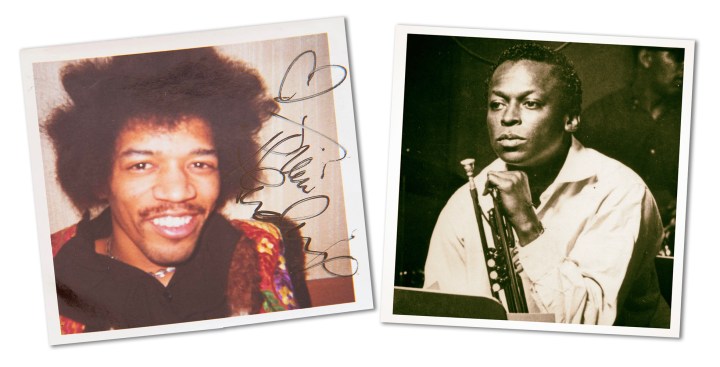
In 1969/70, Jimi Hendrix was in his apartment with Terry Reid, a singer. Jimi excused himself and went to his bedroom, telling Reid he was expecting a friend, and asked Reid to open the door when he got there.
Hearing a knock, Reid looked through the peephole before opening the door, spying “this purple person with these shades around his head”. “I had to do a double take because there is no other human being who looked like that on the whole bloody planet.”
Opening the door, there stood Miles Davis, already a music legend a few times over. Smiling warmly, Reid invited Miles in, but the trumpeter wouldn’t budge. “Is Jimi in?” he growled, and Reid replied that Jimi was in the other room, and invited Miles in.
“I want fucking Jimi Hendrix to open Jimi Hendrix’s fucking door.”
Miles grabbed the doorknob and slammed the door shut. When Reid reopened the door and again urged Miles to come in, he said: “I want fucking Jimi Hendrix to open Jimi Hendrix’s fucking door.”
Reid went to Jimi’s bedroom and reported the exchange. “Yeah, he’s like that,” Jimi said, before himself letting Miles in and leading him to the bedroom.
Reid reports that there was a silence for some time, before he heard the trumpet and Jimi’s unamplified guitar wafting through the apartment.
“It was truly beautiful. It was tasteful playing, nothing showy, or over the top. In the jazz context, Jimi was still pushing the limits, and all those jazz guys respected him like they respected no one else in rock.”
Both were musical geniuses in their own fields, though Miles had by then lived longer and initiated quite a few turning points in jazz. But Miles was dissatisfied by the kind of recognition he was given, or the lack of it when he was out in the world. In jazz spaces he drew respect and awe, but elsewhere he was just another black American, and he hated that.
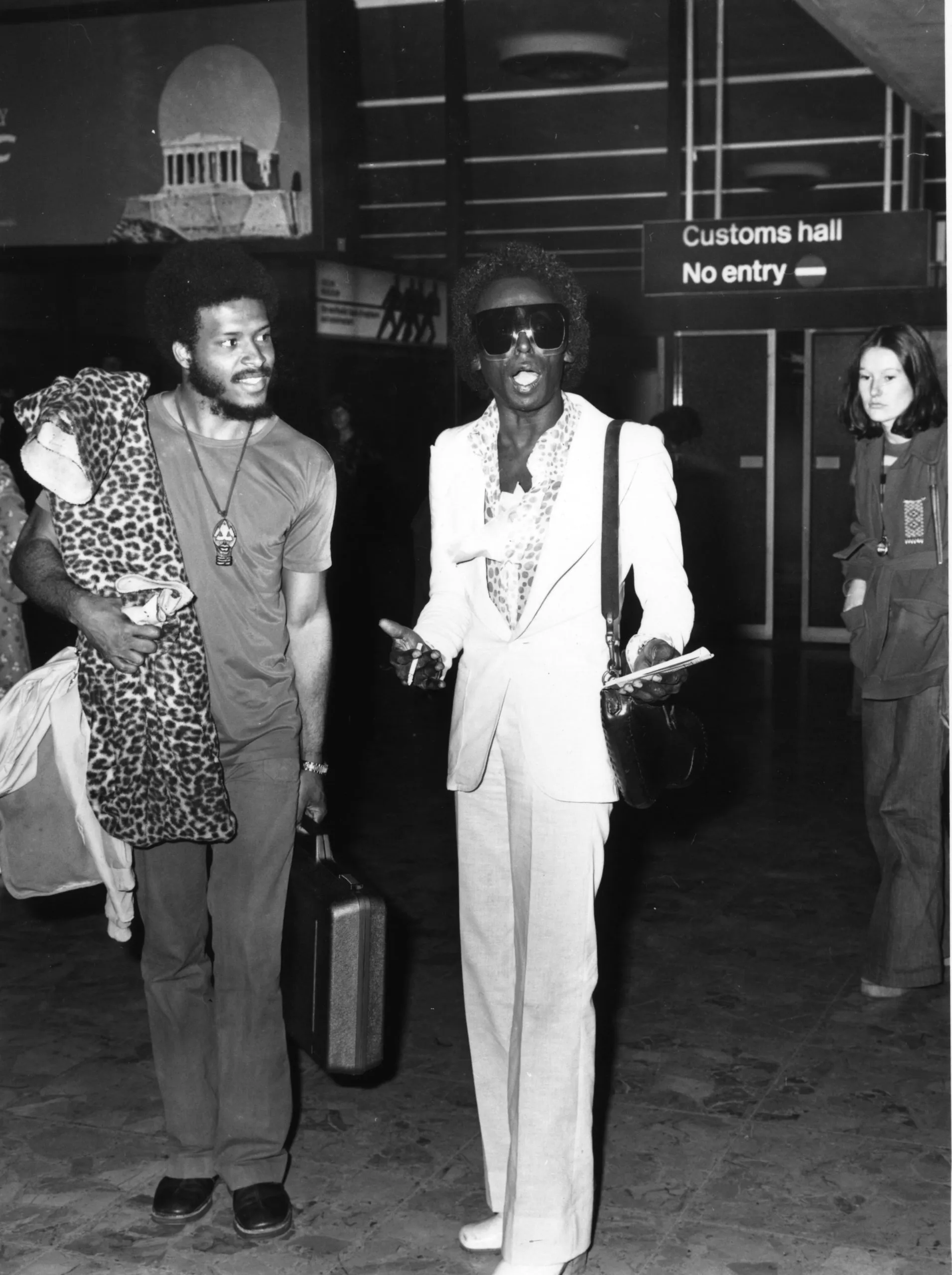
11th July 1973: American jazz musician Miles Davis(1926 – 1991) arriving at London Airport. (Photo by R. Brigden/Express/Getty Images)
Miles moves towards Jimi
Miles married 23-year-old Betty Mabry in September 1968, around the time of the release of the third record by the Jimi Hendrix Experience. She introduced Miles to Jimi’s music, and Miles was smitten.
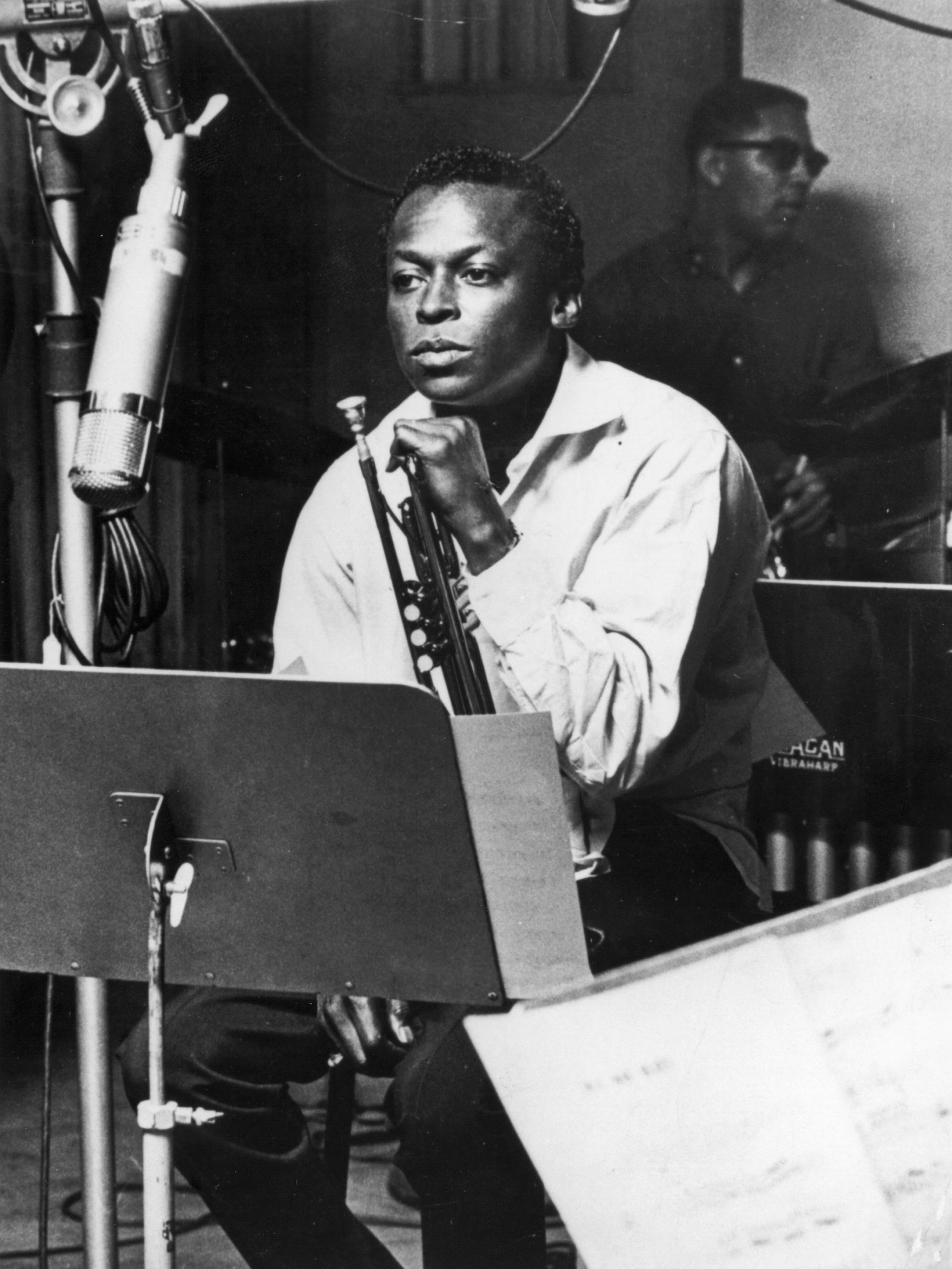
American jazz trumpeter and composer Miles Davis (1926 – 1991), sits with his instrument during a studio recording session, October 1959. (Photo by Hulton Archive/Getty Images)
Miles was soon yearning to meet Jimi; he was fascinated by the guitarist’s musical creations, by his clothing, by his appeal, which he wanted for himself. Miles was envious of the drawing power of young rock musicians, and felt that if he had been supported by his record company, he too could pull in crowds of younger listeners. But he was also fascinated – for musical, not commercial reasons – by Jimi, Sly Stone and James Brown, who were then all the rage.
Miles began to use electric instruments after the mid-1960s, at first bass guitar and electric piano, and in 1967 he was listening to blues guitarists Muddy Waters and BB King “and trying to find a way to get that kind of voicing into my music”.
It is unclear exactly when Miles met Jimi, as various accounts differ. According to one account, it was at hairdresser James Finney’s salon that they met, both men being almost obsessive about coiffure and matters sartorial. It was around the time that John Coltrane died. Miles was deeply affected by the death of Coltrane, a man he loved. His relation to Jimi would echo his friendship with Coltrane in some ways.
Miles’ account of his meeting with Jimi differs, saying in his autobiography: “I first met Jimi when his manager called up and wanted me to introduce him to the way I was playing and putting my music together. Jimi liked what I had done on Kind of Blue and some other stuff and wanted to add more jazz elements to what he was doing. He liked the way Coltrane played with all those sheets of sound, and he played the guitar in a similar way.”
According to Ian Carr, author of Miles Davis: The definitive biography, and himself an accomplished trumpeter and band leader, the pair were hanging out around the time Miles recorded Miles in the Sky: “During this whole period, Miles’ friendship with Jimi Hendrix flourished. Jimi’s image was flamboyant and wild and he went in for such excesses as playing guitar solos with his teeth.
The two spent much time together and Dave Holland [Miles’ bassist] is convinced that Jimi influenced Miles in many ways – even in the way he created his music.”
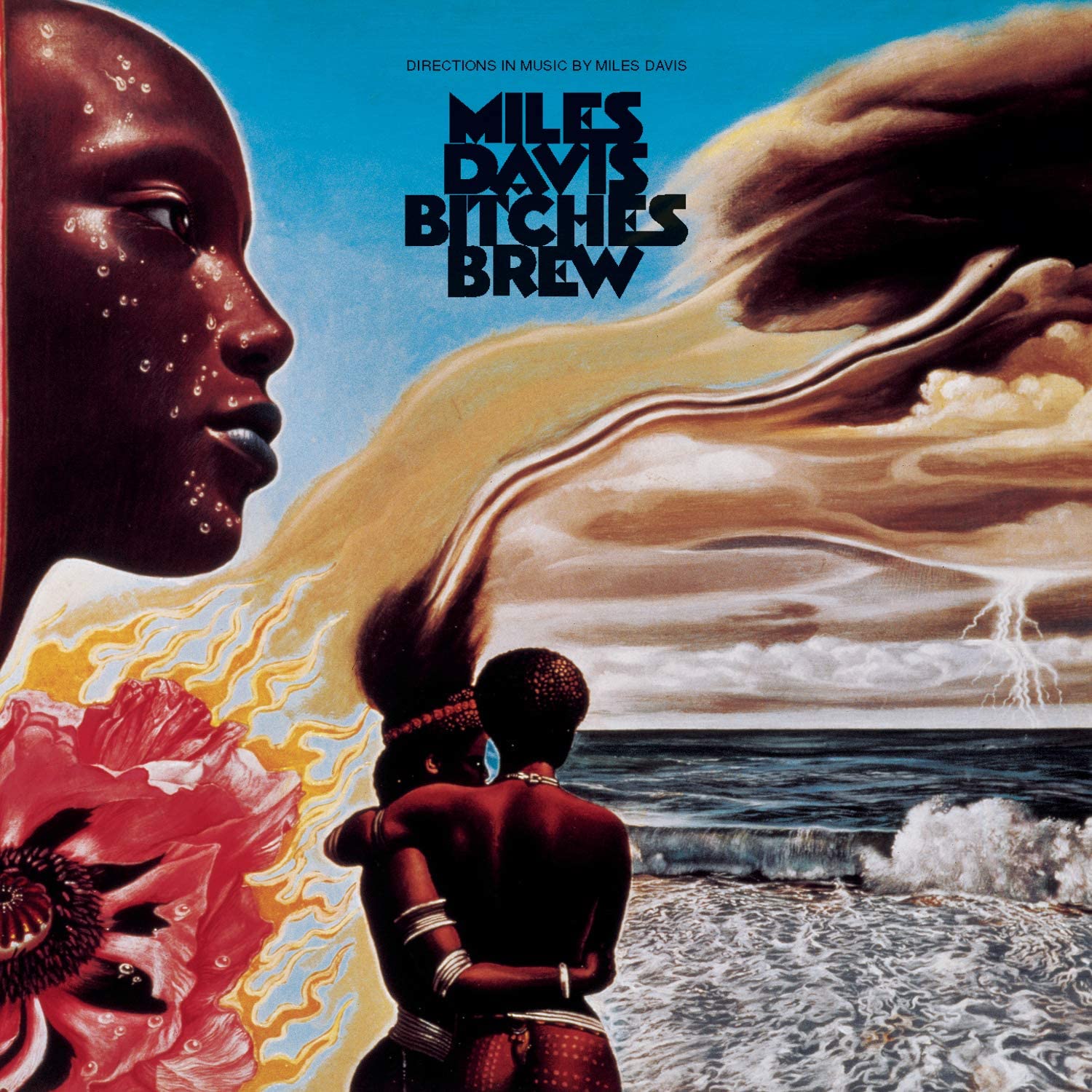
Bitches Brew, recorded in August 1969 around the time the Woodstock festival took place, was remarkable for its rhythms, compositions, instrumentation and the unusual timbres and textures that make up the music: it featured bass clarinet, two and sometimes three pianos, two drummers, exotic percussion, and the electric guitar of John McLaughlin, a player of immense facility very different from Jimi. Miles loved McLaughlin.
“It is possible however that Jimi was influenced both musically and in other ways by Miles, though not insofar as electronics were concerned – in that field Jimi was the trailblazer.”
The album divided Miles’ fans and critics. Responding to the album, jazz critic Stanley Crouch, who died last week, called Miles “the most brilliant sellout in the history of jazz” and a “traitor”. But Miles was convinced he had to move away from the jazz of old and into blues/rock and what would later be called “fusion”.
McLaughlin last week told the story of how Miles complained that he had never seen Jimi play, so he took Miles to see Monterey Pop, the movie that featured Jimi setting fire to his guitar after playing Hey Joe. “All the way through Jimi’s performance, all I heard was Miles talking. ‘Damn! Damn, Jimi!’”
Jimi heads for Miles
Says Ian Carr: “It is possible however that Jimi was influenced both musically and in other ways by Miles, though not insofar as electronics were concerned – in that field Jimi was the trailblazer.”
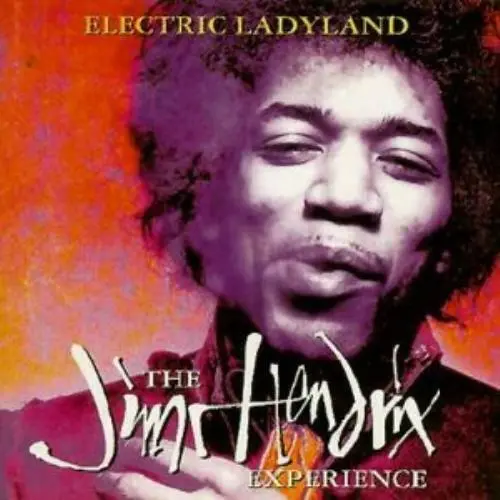
Jimi’s dissatisfaction with the rock scene became evident on the last Experience album, Electric Ladyland, where he began to experiment with various new forms, with some pieces more like jazz improvisations than rock songs. Voodoo Chile and 1983… (A Merman I Should Turn to Be) are the clearest examples of this new sensibility, while Jimi’s music with the Band of Gypsys was also heading in this direction, particularly Machine Gun, which also features avant-garde elements.
Miles attended one of the four Band of Gypsys concerts beginning on New Year’s Day in 1970. Critic Chris Albertson of Downbeat described the first concert: “Jimi is finding where he should be at, and he might well emerge as the greatest of the new blues guitarists.”
After befriending Miles, Jimi began to buy a string of jazz albums. He fell in love with Kind of Blue, Miles’ 1959 masterpiece.
Wanting to record with Miles, Jimi turned to producer Alan Douglas to set up a session with Miles. Strangely, Miles had also approached Douglas to set something up, and they decided to use drummer Tony Williams. Jimi went so far as sending Paul McCartney a telegram asking him to play bass, but McCartney was otherwise engaged. However, Miles’ and Williams’ greed got in the way: the day before they were set to go into the studio, the pair demanded upfront payments of $50,000 each, and Jimi’s manager Mike Jeffrey refused, sinking the outing.
Douglas called Miles and confirmed his request: “I cursed him and slammed the phone down. I had gone through this entire process for Miles, because he had wanted to record with Jimi so badly. Jimi shrugged and said, ‘Fuck it. I’m almost relieved that it didn’t come off anyway.’”
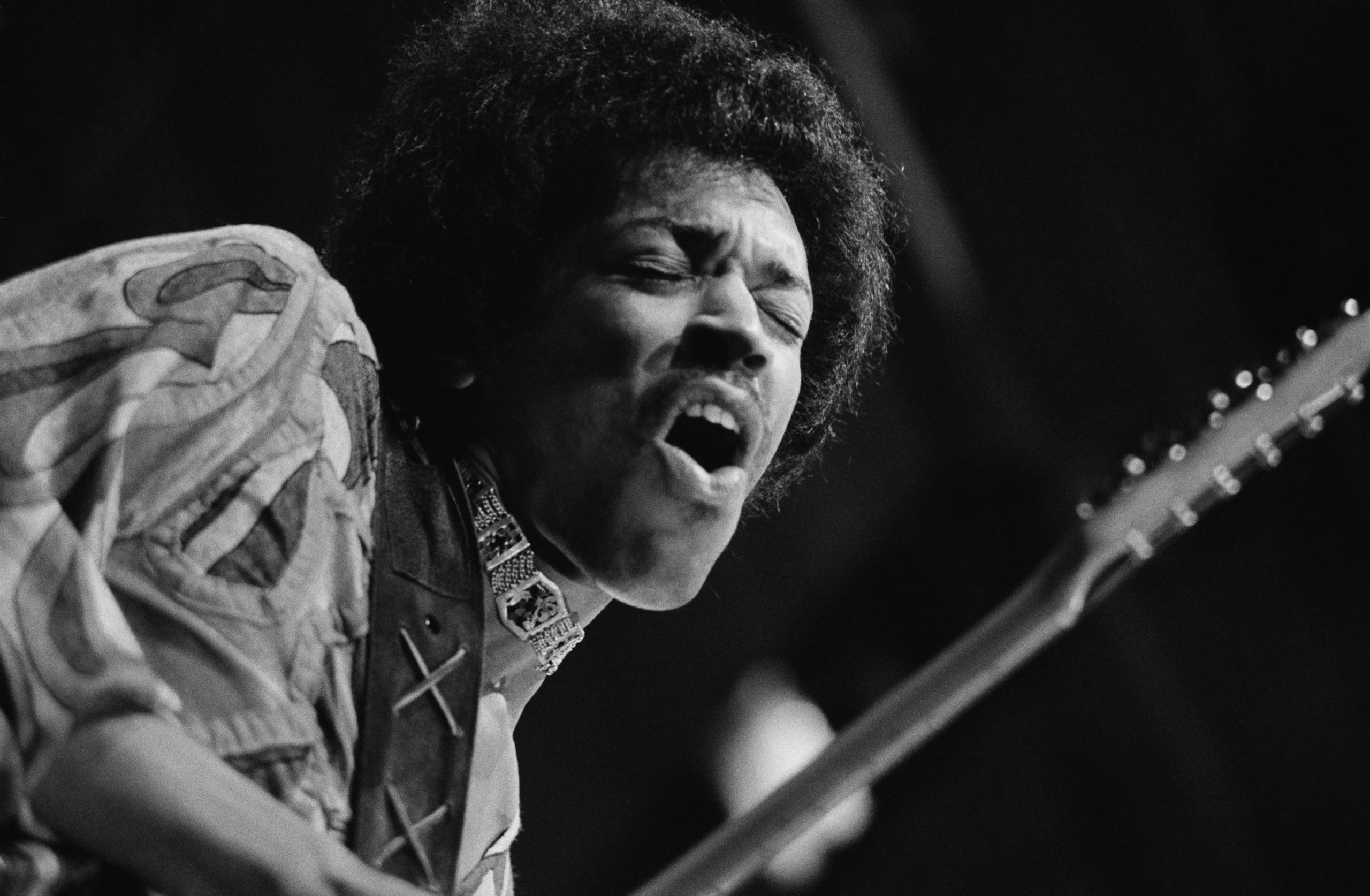
Rock guitar virtuoso Jimi Hendrix (1942 – 1970) caught mid guitar-break during his performance at the Isle of Wight Festival, August 1970. (Photo by Evening Standard/Getty Images)
Jimi’s last concert was on the Isle of Wight, where Miles also played, as did Sly and the Family Stone, the band that so impressed Miles. Jimi was supposed to meet with Miles and arranger Gil Evans to begin recording sometime after the concert, but on September 18, he died in his sleep.
Jimi’s funeral was held on 1 October 1970. Noel Redding and Mitch Mitchell of the Experience attended, as did Buddy Miles, Alan Douglas, Eddie Kramer, Johnny Winter and John Hammond.
Miles was also there, suspending his reluctance to attend funerals. He hadn’t even attended his mother’s funeral, so averse was he to these send-offs. He was scathing about the proceedings, lambasting the preacher for knowing nothing about Jimi; even getting his name wrong.
After the funeral there was a jam session, mostly with Johnny Winter and Buddy Miles playing. Miles was asked to play, but he refused, saying even he couldn’t add a coda to the musical life Jimi had already created.
After Jimi’s demise
Miles’s subsequent music was marked by the desire for Jimi’s guitaring, and he searched for guitarists who sounded like him, using Pete Cosey, Reggie Lucas and Dominique Gaumont, among others. He began to play his trumpet through the wah-wah, which Jimi had used, trying to sound like Jimi.
The temperament of Miles was in stark contrast to that of Jimi. Where Miles was often unfriendly, taciturn, demanding and arrogant, Jimi was friendly, easy-going, even gregarious. Jimi played to his audience, frequently pointing to people in the crowd, smiling, while Miles ignored the audience, barely acknowledging them and often turning his back on them – although he claimed he was directing his band like a conductor, so ultimately communicating with the audience.
“It’s funny the way most people love the dead. Once you have died, you are made for life.”
Miles, who was a formidable personality and never allowed anyone to dominate him in any way, was nevertheless extremely open to ideas produced by others, which was why he was able to lead bands in different eras, always receptive to the times, the people he played with, and new trends.
Miles died 21 years after Jimi, in September 1991
So although Jimi and Miles did play together on at least one occasion, a recording of the two was never made, and we can only imagine what it would have sounded like. Terry Reid is perhaps the only person to have heard the pair.
Let’s give Jimi the last word.
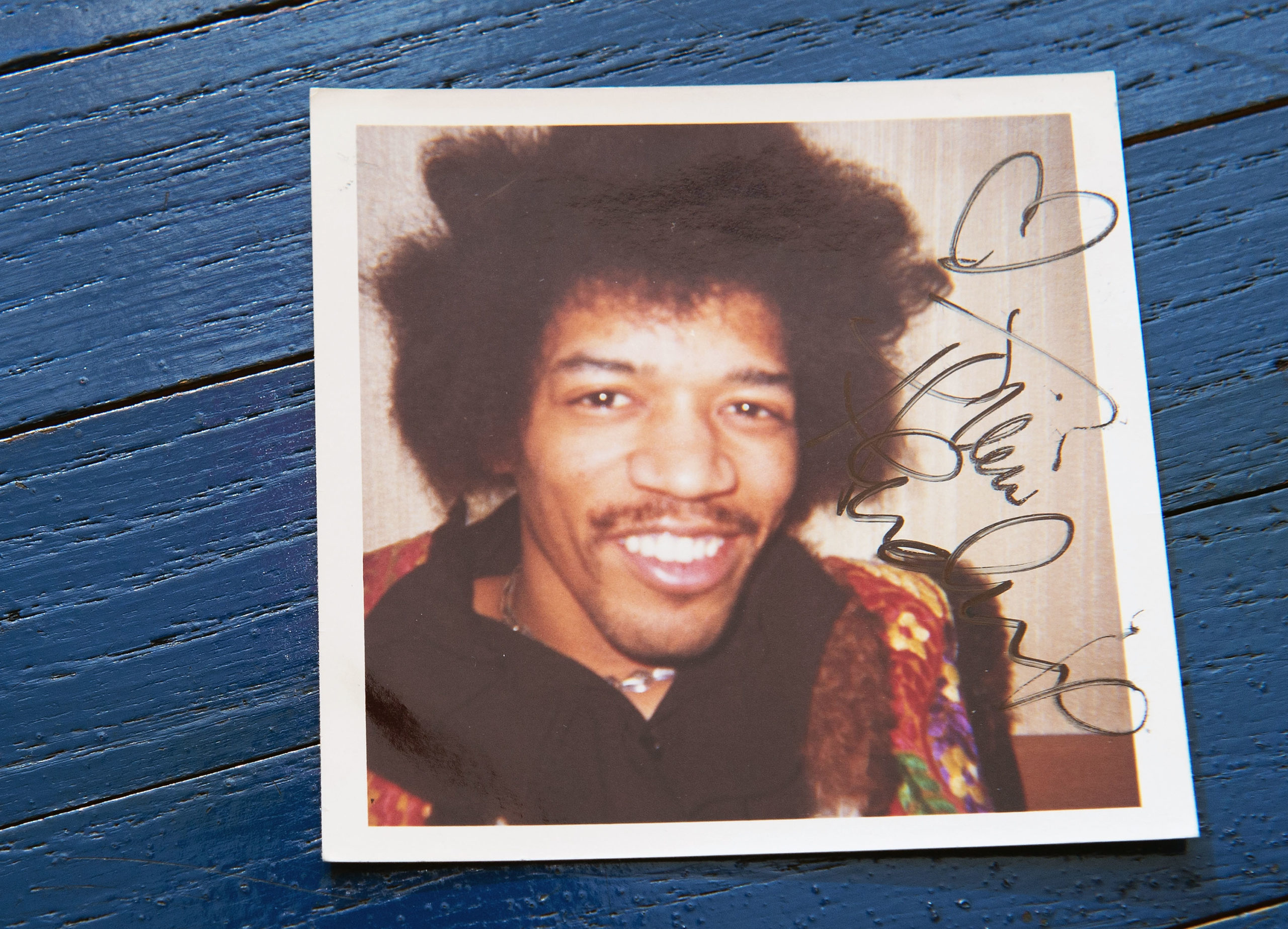
Jimi Hendrix’s signed photo on display at private media viewing at “Gotta Have It!” gallery store on September 18, 2013 in New York City. Dispayed items would be auctioned online at GottaHaveRockandRoll.com from Wednesday, September 18th at 10 am through September 27th. (Photo by Slaven Vlasic/Getty Images)
Shortly before his death, he was quoted as saying: “It’s funny the way most people love the dead. Once you have died, you are made for life. You have to die before they think you are worth anything. And I tell you, when I die, I’m going to have a jam session. [I’ll] have them playing everything I did musically, everything I enjoyed doing most.
“The music will be played loud and it will be our music. I won’t have any Beatles songs, but I’ll have a few of Eddie Cochran’s things and a whole lot of blues. Roland Kirk will be there and I’ll try to get Miles Davis along if he feels like making it.
“For that, it’s almost worth dying, just for the funeral.” DM/ML
















 Become an Insider
Become an Insider
Great to read this. Miles’s Mademoiselle Mabry is clearly “influenced” by Jimi Hendrix’s The Wind Cries Mary. Pity Jimi’s name is misspelt above (not by YM)
Thank you Yunus Mamoniat! What a great article. I grew up with Jimi H, an Icon as a grew up. The capital ‘i’ is intentional. He would have been heading towards his 90’s now. What a wealth of music we have not had from him. But, what a wealth he left behind. RIP Jimi Hendrix.
Great story Yunus! On another level, it is interesting to note that Jimi H lived in the same house as George Frideric Handel in London. I have always wondered what GFH’s Messiah interpreted by Jimi would have sounded like…or All Along the Watchtower as interpreted by GFH!